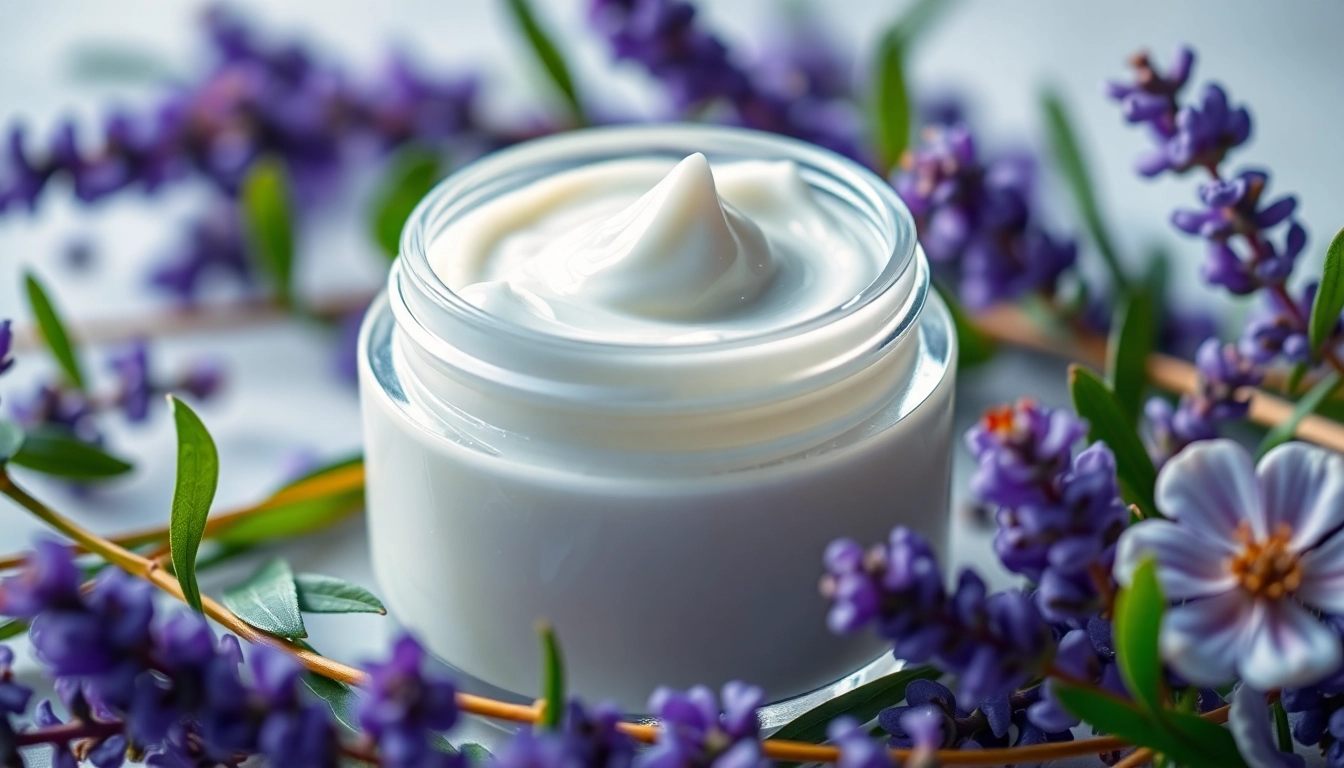Understanding the Role of a Hand Cream Manufacturer
In a world where personal care and skincare are priorities for many, the role of a hand cream manufacturer cannot be understated. These companies not only create product formulations that cater to a variety of skin types but also respond to the evolving consumer demands for quality and efficacy. Understanding what hand cream manufacturers do, why quality ingredients matter, and how they adapt to market needs is essential for brands looking to position themselves effectively in the market.
What is a Hand Cream Manufacturer?
A hand cream manufacturer specializes in the production of moisturizing creams designed specifically for the hands. These manufacturers may operate on a large scale, producing products that are distributed through retail outlets, or they may focus on private label products, creating custom formulations for specific brands. The intricate processes involved in hand cream manufacturing include sourcing quality ingredients, adhering to industry regulations, crafting unique formulas, and ensuring sustainable practices throughout the supply chain.
Importance of Quality Ingredients in Hand Cream
The effectiveness of hand creams largely relies on the quality of the ingredients used. High-quality ingredients not only enhance the moisturizing properties of the cream but also offer additional benefits such as anti-aging effects, skin protection, and healing capabilities. Ingredients like shea butter, glycerin, and essential oils are often sought after for their proven benefits. Manufacturers must ensure that they source their ingredients from reputable suppliers and verify their efficacy through rigorous testing. This commitment to quality can significantly influence customer satisfaction and brand loyalty.
How Manufacturers Cater to Different Market Needs
Hand cream manufacturers recognize the diverse needs of consumers. They often develop a range of formulations that address specific concerns, such as dry skin, aging, or the effects of frequent hand washing. By conducting market research and analyzing consumer trends, manufacturers can create products that not only meet but exceed customer expectations. This adaptability is crucial in a highly competitive landscape, and successful manufacturers often engage with consumers through feedback and surveys to refine their offerings.
Benefits of Partnering with a Hand Cream Manufacturer
For brands looking to create their own hand cream lines, partnering with an established hand cream manufacturer offers numerous advantages. From customization to expert insights, these benefits can drive a brand’s success in the saturated skincare market.
Customization of Formulations for Unique Offerings
One of the most significant advantages of working with a hand cream manufacturer is the ability to customize formulations. Brands can collaborate to create unique products that cater to specific demographics or target niche markets. Whether it’s tweaking the scent, adjusting the texture, or adding active ingredients suitable for sensitive skin, customization allows brands to differentiate themselves in a crowded marketplace. Furthermore, a tailored approach can help in building a more loyal customer base that feels a personal connection to the brand.
Access to Advanced Packaging Solutions
Packaging plays a critical role in the appeal and functionality of hand creams. Exclusive or innovative packaging can elevate a product’s market presence. Partnering with a manufacturer often gives brands access to cutting-edge packaging solutions that enhance the product’s shelf appeal, functionality, and overall user experience. Many manufacturers offer environmentally friendly packaging options, which also cater to the increasing demand for sustainable products.
Leveraging Industry Expertise for Market Success
Hand cream manufacturers possess extensive knowledge of trends, regulations, and consumer preferences. By leveraging this expertise, brands can effectively navigate the complexities of the skincare market. Whether it be advice on compliance with cosmetic regulations or insights into ingredient trends, manufacturers can be invaluable partners in helping brands succeed. Additionally, their experience can guide effective marketing strategies, ensuring brands are well-prepared to introduce their products to the market.
Popular Hand Cream Formulations and Their Benefits
Understanding the widely used formulations in hand creams can help brands identify what might work best for their target audience. Manufacturers can provide formulations with varied benefits based on popular and effective ingredients.
Shea Butter and Its Moisturizing Properties
Shea butter is widely recognized for its rich moisturizing properties. It contains vitamins A, E, and F, which nourish the skin, making it an ideal ingredient for hand creams aimed at combating dryness. When infused into a hand cream, shea butter not only provides intense hydration but also offers a protective barrier against environmental aggressors. This ingredient caters to individuals with dry or sensitive skin, making it a top choice among consumers.
Natural Ingredients vs. Synthetic Compounds
There’s an ongoing debate in the skincare industry regarding the effectiveness of natural ingredients versus synthetic compounds. Many manufacturers are now opting for a hybrid approach, blending both types of ingredients to harness the benefits of each. Natural ingredients are celebrated for their skin benefits and eco-friendliness, while synthetic compounds may offer enhanced stability and safety. Educating consumers on these formulations helps demystify the differences, aiding them in making informed choices when selecting products.
The Rise in Demand for Organic Hand Creams
The increasing awareness of sustainability and eco-conscious living has propelled the demand for organic hand creams. Manufacturers are now focusing more on sourcing organic ingredients, ensuring that their products align with consumers’ values. Brands that offer organic hand creams often attract health-conscious customers willing to invest in clean beauty products. By incorporating organic ingredients, manufacturers aid brands in tapping into this growing market segment.
Selecting the Right Hand Cream Manufacturer
Choosing the right hand cream manufacturer is a critical decision for brands. A wrong choice can affect product quality and overall business success. To ensure a successful partnership, there are several key criteria to consider.
Key Criteria for Choosing a Manufacturer
When selecting a manufacturer, brands should evaluate several factors, including production capabilities, lead times, and minimum order quantities. It is also important to analyze their previous work and product samples to assess quality. Businesses should ensure that their chosen manufacturer is capable of handling scaling production without compromising quality. Transparent communication and collaboration are also vital aspects of a healthy partnership.
Understanding Certifications and Compliance
Certifications such as GMP (Good Manufacturing Practice) and ISO standards can provide assurance regarding quality and consistency in manufacturing practices. Brands should verify that their chosen manufacturer adheres to these standards, as it signifies a commitment to quality and safety. This adherence not only protects the final product but also builds trust with consumers, who are increasingly cautious about what they apply to their skin.
Evaluating Customer Reviews and Testimonials
Customer reviews and testimonials can provide insight into a manufacturer’s reliability and quality. Brands should take the time to research and seek feedback from other companies that have worked with potential manufacturers. This firsthand information can reveal strengths and weaknesses, enabling brands to make well-informed decisions. Additionally, case studies showcasing successful partnerships may highlight a manufacturer’s competencies.
Marketing Your Hand Cream in a Competitive Landscape
In order to establish a successful hand cream brand, companies must have a strong marketing strategy. The skincare market is highly competitive, and standing out requires innovative marketing techniques and a robust brand identity.
Creating a Unique Brand Identity
A unique brand identity sets a product apart and can create emotional connections to consumers. This identity should encompass branding elements such as logos, color schemes, and storytelling that resonates with the target audience. Successful brands often articulate their values, mission, and product benefits in a way that engages potential buyers. Additionally, incorporating user-generated content can help humanize a brand, as consumers feel more connected to authentic narratives.
Utilizing Digital Marketing Strategies
Digital marketing is crucial in today’s customer engagement strategies. Brands should harness social media platforms, SEO, influencer partnerships, and content marketing to reach their audience effectively. Engaging content, educational resources, and promotional campaigns can foster a strong online presence, driving traffic to their product pages. Investing in targeted advertisements can help brands reach niche markets looking for specific product benefits.
Maximizing Distribution Channels for Growth
Identifying and optimizing distribution channels is critical for delivering products to consumers effectively. Brands should explore various avenues, including e-commerce, retail partnerships, and subscription models. Additionally, integrating platforms that facilitate direct-to-consumer sales can enhance brand visibility and improve sales margins. Regular analysis of sales data can also help in refining distribution strategies over time to better meet consumer demands.



